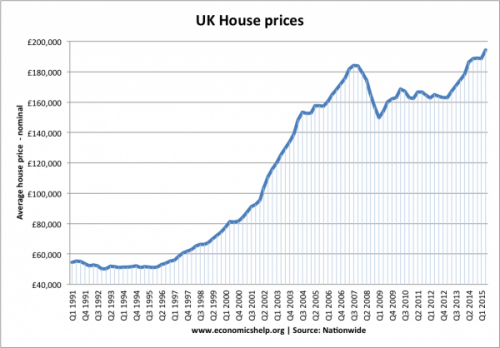Growth is not necessarily related to yield
Growth is not necessarily related to yield
Many property investors somehow believe that a low rental return will slow the capital gain of residential properties. in other word, many believe that the cash flow of an asset determines its capital growth. this is not necessarily true.
Take a look at the following examples that cut the link between cash flow and capital gain first. What cash flow do the following assets produce?
1.A vacant block of land next to a home, or;
2.A painting from a famous artist

We all know that the above assets will continue to appreciate in value even though there will be no cash flow; there are many examples where assets may go up in value with no cash flow!
Let’s go back to the basics of asset value. Why is an asset worth something? For anything to have a monetary value, it needs to satisfy two conditions:
1.Serve a purpose, i.e. someone wants it – continued demand;
2.Has scarcity, i.e. there is not enough for everyone – limited supply.
However, not everything with a demand has a monetary value, e.g. the air we breathe – there is no scarcity of it. Conversely not everything that is scarce is worth something either. For example, used shoes – as there is no continued demand for it. For an asset to appreciate in value, we need continued demand and limited supply, simultaneously.
Why do residential properties grow in value, regardless of cash flow?
The reason for their continued capital growth is the combination of continuing demand and limited supply of land. As long as the majority of the residential properties are still owned by home owners instead of investors, residential properties don’t need the rent to justify the growth. In the residential property market, home owners are the driving force for the price growth; most investors are just taking a ride with them.
The day when most residential properties are investment properties, the yield will have far more impact on the growth, just like properties in the commercial property market.

Why do cash flow properties grow in value, even when there is no scarcity of land?
Any residential property that can be called a cash flow property needs to have the yield greater than the current variable interest rate. A rental property that has greater than 7% rent can be called a cash flow property, and they are normally in outer suburbs or regional areas.
An average cash flow property won’t have much capital growth normally, as there is generally no scarcity of land or anything else.
On the other hand, a cash flow property with extremely high yield (greater than 10%) could have tremendous capital growth due to its scarcity of the yield, especially when interest rates are still low and many investors are looking for instant cash flow instead of future capital gain. The only thing we need to be careful of is that the capital gain caused by the scarcity of high yield is normally unsustainable. Once the yield drops, due to the increase of the asset value, the scarcity factor no longer exists, hence the reason for low capital growth.
There has been an ongoing debate on which strategy is better: capital gain or cash flow. I believe that anything that doesn’t serve a purpose will cease to exist. The fact that both strategies still exist today is a good indication that they both serve a purpose for different investors.

